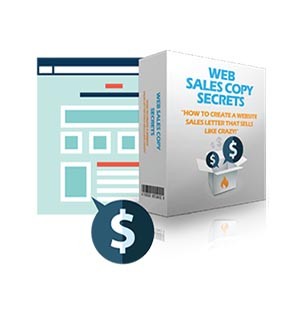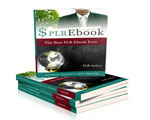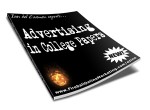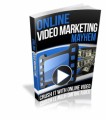 License Type: Resell Rights
License Type: Resell Rights  File Size: 367 KB
File Size: 367 KB File Type: ZIP
File Type: ZIP
 SKU: 54124
SKU: 54124  Shipping: Online Download
Shipping: Online Download
Ebook Sample Content Preview:
6h. Rule 2 - No Constraints.
Which brings me to rule number Two: Don't be constrained by length. As I mentioned in the previous sales letter section, some of the best sales letters I've ever read that have just totally sucked me in using the same format as we've been talking about throughout this guide. Some have taken me over an hour to read, and turned out to be big selling products with great visitor to sales ratios.
So here's the thing. Don't fall into the checklist trap. A small list of features planted on a page is no match for the structure we talked about above. Now back when I first started, I wrote this big long sales letter, a little after the previous example of amalgamating all the features into one, and needless to say it was a tad large. I wasn't really all that confident about keeping things as they were as the people that I was selling to were busy people. People who don't want to hang around for ages reading long reams of text. Or so I thought anyway.
So I went away and created this list type sales letter that I thought would do so much better, and ran a split run test with the very long and very short versions. A week and a half and twenty five new signups later from the long sales letter, and still staring at a blank from the shortened version, I had to actually check of everything was working correctly because the short version was performing so badly. Testing time was over.
I never went back. Thinking that short sales letters would outperform my long ones was probably the most profitable test that I've carried out with regards to sales letters. Without the testing though, based on the untested and incorrect assumptions at the time, it probably would have been the most expensive. Thankfully that thought was squished at an early stage.
6i. Rule 3 - Four Elements Of A Successful Sales Letter.
Rule Number Three: Your sales letter should only ever be doing one of four things. Enforcing your expertise, enticing with benefits, crushing fears and doubts about your product, or asking for money. When you're done writing, take a read through your sales letter and see if you can spot the points at which you may have deviated from your original objective, and wipe them out. Contrary to some very strange examples I’ve come across in my time online, there is no reason for any other text to exist other than to distract, confuse or get in the way.
We saw this example earlier, but it applies here too. See your sales letter as kind of a bridge. The starting point on one side is the headline, and anyone who successfully gets across the bridge to the other side has hit your order link and purchased your product. All those little niggly bits that have no place, all those distractions, and problem areas are giant dirty holes that customers that should have been yours, are falling through on the way to your order link. All you're doing is plugging those gaps by removing the un needed areas and distractions, and giving the best chance of a safe crossing, which of course means money in your pocket.
So here's the deal. Keep focused, rip out all those irrelevant parts of your sales letter. If it doesn’t enforce your expertise, entice with benefits, crush fears or ask for cash, it plainly doesn't need to be there. Plug the gaps. Remove the dead wood. Stop losing customers through the holes.
6j. Rule 4 - No Assumptions
Rule number Four: Never assume anything about your readers. There's so many renditions of this, and I'm guilty of doing this too in draft versions of texts. It's only natural if you've been around something for a long time that seems simple, obvious, or the norm to you. Remember it's not necessarily the norm for others. Depending on the market you're going after, there's going to be some degree of variation in the type of visitor you get and their previous experience on the subject.
There’s so many variations of this, but let me give you a few examples. "Inverted commas" is a good one that seems to be taking sales letters by storm recently. When you're talking about something in a focused way, coming out with something contained in inverted commas may mean something to you, but could well mean something different to someone else, and is very easily misunderstood, along with sarcasm, irony and slang.
6k. Rule 5 - Spice Up Your Sales Letters.
Rule number Five: Spice it up a little. Your writing style doesn't have to be hard sell all the way, but don't make it boring. Make it colorful, especially when you're talking about your products benefits. Remember your product isn't good. It's not cool, or nice. It's amazing, astounding, rock solid, laser targeted, and unbeatable. Get a little excited and replace some of your descriptive words with something a little more spicy and interesting.
It may sound like hard sell, but not so when coupled with my favorite writing style, which couldn't be easier for anyone to do, and that's just typing as you'd talk. It goes from hard sell TV ad sounding, and changes instantly to have a personal, but excited and confident feeling about it. There's nothing wrong with injecting your own personality either if you want to, in fact this actually adds to your sales letter. Just remember to avoid the pitfalls we talked about earlier whilst making your benefits sound a little more juicy and attractive.
6L. Rule 6 - Keep It Structured.
Rule Number 6: Don't lose your structure. We already talked about the four aims of your sales letter, but if you take a closer look at what we’ve just been discussing there's a particular structure about it. We started off with the headline, and the sub headline pulling the readers into the letter, then we went on with an intro and some reinforcement, proof and testimonials, then benefits of your product, guarantees, damage limitation making the price seem less significant, and then the PS's.








